|
lake of mud: An aerial view of the mud volcano that erupted at Brickfield Village, Tabaquite, in July 2019. @Caption:—Photo courtesy Xavier Moonan, senior geoscientist at Touchstone Exploration. NEAR the village of Brickfield, in Trinidad’s interior, there is a woman who walks the main road most days, talking to herself, and to anyone who has time to spare. One morning in July 2019, she stopped at a roadside carat shed outside the Agriculture Ministry’s Forestry Division office and told an incredulous story to the workers. It was about what she had heard coming from deep in the bush while walking along a lonely stretch of the Tabaquite Main Road the week before. There was an explosion in the forest, she told them, and a sound like thunder, and then the crackling of falling trees. Birds flew from the direction of the sound, she said. Then there was silence. The forest workers suspected they knew what was the source of the disturbance. So the gang of seven, whose job it is maintain vast acreages of teak in a part of Trinidad desperate for development, went in search. Trees snapped like twigs: The force of the mud volcano against the trees. With chainsaws and cutlasses, they cut a path into the woods off Colonzo Trace, and walked more than a kilometre before abandoning the effort. All they found was deepening bush, and too many snakes, according to Forestry worker Suresh Roopnarine. But there was still some daylight left, and curiosity got the better of them. So they decided to clear an old timber access road, and chopped a path for about two kilometres before coming upon what the woman had heard. A mud volcano had erupted to life, tearing down the forest trees, and clearing an area of at least two acres. In the midst of greenery, they found a roiling lake of mud and severed trees. And it continues to throw up new deposits, slowly expanding outward, the Express noted during a visit days later. Surreal sight There were no houses nearby. The nearest resident, living about three kilometres from the site, said he had no idea it had happened, and had no plan to visit “a big hole in the ground”. The damage done was to the forest trees, many pushed over by the mud flow, others snapped like twigs. It is a surreal sight. A lake of mud surrounded by a wall of trees, in the shape of a footprint. The new mud volcano is located about eight kilometres east of the Piparo mud volcano, which erupted in February 1997, burying the roadway, homes and vehicles. And the last time there was an eruption of this magnitude was February 2018 when the dormant Devil’s Woodyard mud volcano belched to life and disgorged mud 100 metres wide and 1.8 metres deep. Senior geoscientist at Touchstone Exploration Xavier Moonan and members of the Geological Society of Trinidad and Tobago Keston Brown and Stefon Harrypersad trekked into the forest and conducted an initial study. Said Moonan then: “The flow is fairly recent... we can’t estimate exactly when. The leaves of the trees that fell due to the mud flow are still green, but we were advised by experienced foresters that these particular trees can remain with green leaves even after they have been felled for months. The mud itself hasn’t been weathered much, and the flow structures are still very distinct, so I would estimate it happened in the last couple weeks at maximum.” He said from the historical data and satellite imagery, it appears that the July eruption was the first large-scale one since at least 1940. 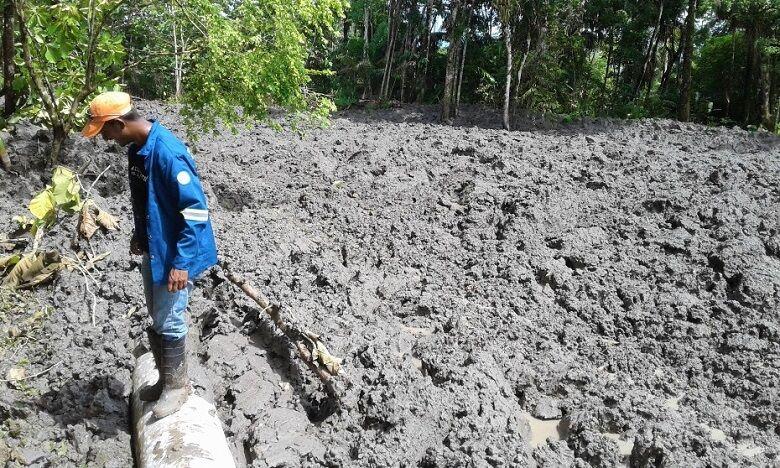 Expanding outwards: The mud volcano that erupted in Brickfield Village Moonan’s information was corroborated by village elders who recall visiting the site decades ago and seeing multiple conical vents in the forest before the woods became impenetrable and the site passed into memory. Call it Polly Maharaj
So, what caused the eruption? Faults are breaks in the rocks and can extend to significant depths in the earth. The Brickfield mud volcano is located on what geologists know as the Tabaquite fault. At depths below the Tabaquite area, there are sands with oil, gas and salt water trapped by clays. The movement on the fault allows the trap to break for an instant, allowing the water, oil and gas to escape, said Moonan, who is also vice-president of the American Association of Petroleum Geologists Latin America and Caribbean region. The fluids travel upwards to the surface where they pick up bits of rock—clay, sandstone and limestone along the way, and this is the mud flow that we see when it explodes at the surface. And although the Piparo mud volcano is nearby, it is not related to the Brickfield mud volcano since they occur on separate faults, said Moonan. Regarding the size of the eruption, Moonan said the mud flow covers an area similar to the size at Devil’s Woodyard. The team measured the maximum length of mud flow at 165 metres (a football field is 110 metres in length) and the maximum width at 76 metres. The geologists said the mud flow was expelled in a north-westerly direction along a three-degree gradient slope, with the flow turning to the north at approximately 33 metres downslope. And the estimated volume of mud expelled? It’s 1,740 cubic metres or approximately 11,000 barrels. The mud flow is much less thick than that which was observed at the Devil’s Woodyard eruption, hence the volume is significantly less. Despite this, the force of the eruption was just as damaging, felling lots of trees in its path. And for adventurers interested in seeing this natural phenomenon, there is a warning, It’s not near a road, so be prepared to hike along a forest trail, on State lands. And there will be snakes. Do not go alone. Do not go at night. Walk with water. Wear the right footwear. It’s going to be muddy. And you can call it Polly Maharaj. That’s the name of the woman who discovered it. (Source: Daily Express, July 13, 2022)
0 Comments
It's been said that you can find a Trini everywhere, and where a carnival is, a Trinbagonian is known to be behind it. This is the case with the new carnival being born in South East Asia, Indonesia, on the island of Bali. Caribbean Vybez founder Ethan Auguste who first went to Bali in 2019, is organising this first Trinidad and Tobago-themed Carnival in the S.E.A. region. Auguste is no stranger to promoting his culture. He is also known as the pioneer who brought Caribbean culture to the United Arab Emirates back in 2009 and now in Bali. Although Reggae is no stranger to these parts, Trinidad and Tobago's Soca and Carnival is, and this was the mission of Caribbean Vybez when deciding to make Bali its new home three years ago. Bali Carnival planned from September 23 to 28, is already making waves. The event, which takes place at the new Renaissance Bali Hotel, Nusa Dua, will start with a welcome event and continue to the hotel's Atomic 13 pool venue for Glow, the all-white affair on day one. Carnival goers will then don their costumes designed by Trinidadian Aaron Schneider and produced in Bali. Revellers will take to the road for the first Carnival inspired by The Greatest Show on Earth - Trinidad and Tobago Carnival, which leads into a las lap celebration scheduled to go till late in true Trini style.
Bali Colour Festival which will run on the following day will host a special J'ouvert on the beach, followed by a Caribbean Soul Concert with a lineup of top Caribbean talents on the last day of the main activities. "It's been one of my dreams over the years to produce a carnival, and coming to Bali, I saw the potential to create not just a carnival event but an experience many other carnivals don't have in a destination people have on their bucket list. Bali Carnival would hugely boost Bali's tourism during their slower period," Auguste said via a press release. With destination events becoming popular, Auguste is confident that Bali Carnival will secure its place in the carnival calendar, one that all carnival fans would not want to miss. From steelpan to the cuisine of T&T and the Caribbean, this carnival experience promises to be a diverse and captivating affair. To join the inaugural Carnival, visit their website www.balicarnival.com and follow their Instagram @balicarnvial for updates and packages. (Source: The Loop, July 12, 2022) If SHURVONE BRATHWAITE could speak to his teenage self, he’d simply say, “Chill dude. It’s going to be okay.” As a music teacher and performer, this Tobagonian made the “journey of self-discovery” while convincing his mother he wouldn’t be a “starving artist.” Now, close to 12 years later, he believes that he is doing what he is placed on earth to do at this stage in his life. According to Shurvone, “music has been one of the few things that remained constant in my life. There is a song or piece for every emotion I am feeling. Music has taught me the importance of being diligent and focused.” Here is Shurvone’s MENtions story:
—- I had what may be considered a normal childhood. When I wasn’t inside studying or helping with chores, you can find me most times in front of the television watching my favourite shows or outside riding my bike or playing. Up to age of 18, I would either be at my family home or spending time at my great grandmother’s house, which was my second home. My great-grandmother was the rock of our family. She left a financially stable but stressful marriage in Toco to build a new life for herself in Tobago. She worked diligently to raise her children alone. Then when conflict presented itself later in her life, she took some of her grandchildren and raised them as her own. She took care of me by babysitting my sister and I when my mother took night classes to pursue tertiary studies. She left this earth in 2010 knowing she did everything she could to improve our family name and our lives. Those of us who listened to her life lessons are grateful to her and to this day, we still make reference to her in conversations. While my great-grandmother had a great impact on my life, as most Tobagonian matriarchs do on the lives of their children and grandchildren, my mother has been an amazing force. She instilled the value of education from as early as I can remember. I saw first-hand how having an education benefited her and my household, so I knew that I had to follow closely in her footsteps. Looking back on how things played out over time, it isn’t strange that I found myself working in education, instilling the same values my mother instilled in me, to my students. My journey to music education My teachers and friends knew where I was heading before I even considered it. My mother, herself an educator, needed some convincing about my journey into music. I don’t blame her for being sceptical. I’m sure it wasn’t easy for her to hear that I wanted to study music after being a science student in secondary school. We have all heard the “starving artist” story. Yet, she supported me along the way and takes the time to learn about what I do as a musician. I am thankful for her continued support and love. My music teacher at Bishop’s High School Tobago, Mr. Anthony Moore planted the idea of being an educator in my head. After completing CAPE (Sixth Form), I was looking at options for my “gap year” and he suggested that I apply to the Division of Education to be a music teacher. I was already seriously considering studying music and I wanted to experience the school environment from the teacher’s perspective. In September 2010, I walked onto the compound of Roxborough Secondary School and now, almost 12 years later, I know the school environment is one of the places I enjoy spending my time. I am often asked how do I add value to my students’ lives. My response is “by first being human”. I enter my first class with the intention to show them full respect and my aim is to teach music as well as how to be a good human being. “A song for every emotion” Music has been one of the few things that remained constant in my life. There is a song or piece for every emotion I am feeling. Music has taught me the importance of being diligent and focused. As a child, I would constantly get in trouble for humming while people were talking to me. The reason for this is I would be humming the melody of a piece or song that reflected my emotion. Just imagine being scolded for something you did and then as you walked away, your Caribbean Mother heard you humming a “chune”. Lol! I eventually learned that the humming can be viewed as disrespectful, so I started to run my “chunes” in my head. My motivations I’m motivated by my ability to convey the thoughts and emotions of composers through sound. The subtleties of aiming to communicate what a composer was feeling thousands of years ago motivates me in the rehearsal space and is the driving force behind every performance. On an individual level, I’ve also been motivated by Yevgeny Dokshansky, Anthony Woodruffe and Rodrick Urquhart (RIP) who all played a role in my development as a performer. In terms of music educators, I look up to Patrice Cox-Neaves, Dr. Leah Brown, Dr. Roger Henry, Deborah Moore – Kushmaul and Caitlyn Kamminga. As a performer, I have a long list of musicians I love listening to and have found myself adopting certain elements of their performance style. I am inspired by my students as well, the good and the misguided. To my students or anyone thinking of a career in music or as a music educator, I say, if it makes you happy and you can’t see yourself doing anything else, do it. It’s a labour-intensive journey so buckle up for the ride. Be prepared to give it your all. – Shurvone attended St. Andrew’s Anglican, St. Nicholas Primary Schools and Bishop’s High School, Tobago. Between 2011 and 2021, he pursued studies at The University of Trinidad and Tobago, Framingham State University, and UWI – ROYTEC and holds an undergraduate degree in Music (Performance and Ethnomusicology Track), a Master’s degree in Education (Teaching), and a Certificate in The Business of Entertainment. (Source: MENtions,May1, 2022) Whitehall was built in the early 1900s by Joseph Leon Agostini, a cocoa planter, as the largest private residence along the Maraval Road strip at Queen’s Park West.
Some accounts say it was built in 1904. Others say construction began in 1904 and took three years. The mansion was originally called Rosenweg (path of roses), and was designed to reflect Agostini’s Corsican heritage (Moorish Mediterranean style) as he was born in Corsica in 1839. After Agostini’s death in 1906, his family remained in residence until 1910 when, unable to meet mortgage payments, the mortgagee, William Gordon Grant, foreclosed. The property was then sold to Robert Henderson, an American businessman from Venezuela. The Henderson family renamed the mansion Whitehall after the coral stone from which it was built. During the Second World War, with the arrival of the United States Forces to Trinidad, Whitehall was commandeered from the Seigert family, heirs of Robert Henderson, as headquarters of the Air Raid Precaution. In 1944, the British Council rented the building as a cultural centre. Later, the Trinidad Central Library, Regional library, National Archives, Government Broadcasting Unit, Trinidad Art Society, and the Cellar Club all rented or occupied space in the building. From 1949, the building remained empty until 1954, when it was purchased by the Government of Trinidad and Tobago. In 1957, Whitehall was occupied by the Pre-Federal Interim Government prior to the establishment of the West Indies Federation in 1958. In 1963, after the Federation had collapsed, it became the Office of the Prime Minister occupied by Dr. Eric Williams, T&T’s first Prime Minister after Independence. Restored in 2000, Whitehall continued to be occupied by the Office of the Prime Minister of the Republic of Trinidad and Tobago until 2009. After some deterioration and $32 million in restoration work, Whitehall has been resumed as the home of the Cabinet in August 2019. (from Donimic Kalipersad, May 10, 2022) . . . Sources: National Trust of Trinidad and Tobago; Josh Lu Congratulations to the Trinidad and Tobago 2008 Olympic 4x100m CHAMPIONS!
Earlier today, the International Olympic Committee hosted the Olympic Medal Reallocation Ceremony at the Olympic Museum in Lausanne Switzerland. Trinidad and Tobago originally finished the race in 2nd place behind Jamaica, however, due a doping violation by one of the Jamaican athletes T&T was promoted to the Gold Medal position. The team in running order: Keston Bledman Marc Burns Emmanuel Callender Richard Thompson Aaron Armstrong ran the preliminary round in place of Emmanuel Callender! he House of Angostura® has unveiled its new ultra-premium rum - Angostura® Zenith.
This Limited-Edition rum will join Angostura’s esteemed Private Cask Collection. Just 195 bottles have been produced globally. Chairman of Angostura Holdings Limited, Terrence Bharath said: “In keeping with our ongoing corporate social responsibility initiatives, we are pleased to announce that part proceeds from the sale of the 195 bottles of Zenith will go towards providing a scholarship for a deserving young person to be given the opportunity to pursue studies in music or art. We feel that it is our social duty to help those underprivileged communities where there are persons who possess the inherent creative gifts to rise above their circumstances and soar in reaching their goals.” A release from Angostura noted that the distinguished flavours of Zenith are derived from two of Trinidad and Tobago’s most iconic distilleries – Caroni 1975 Limited and Angostura Limited. Aged in charred American oak casks that were once used for bourbon, Angostura® Zenith combines flavours of sweet and smoky depths, delivering a fine character with a unique blend of Angostura® and Caroni aged rums ranging from 20 to 23 years old. Zenith takes the House of Angostura® Private Cask Collection to new heights with the last of the best of the legendary House of Caroni. Established in 1923 on the site of the old Caroni sugar factory, the now defunct Caroni Distillery produced highly sought-after rums notable for a distinctive heavy profile, rich, earthy, and smoky. The premium rum is produced with the last of Caroni's treasured molasses, and features rich aromas of cocoa, oaky notes with hints of raisins on the palate and subtle apple notes, complete with warm aged notes of sherry with a lasting dry, crisp finish – the perfect proportions to achieve absolute depth and balance. Rich gold in color, Angostura® Zenith has a deeply complex character, brimming over with sweet tropical fruits, warm vanilla toffee, indulgent cocoa and a dry, crisp oak smokiness. The House of Angostura® Private Cask collection consists of a range of Limited-Edition mature rums originating from specially selected casks with a dedication to artistry and craftsmanship. It captures the ageing process of Angostura® award-winning rums, while highlighting the journey of the rums from cane field to the shelf. Bharath said: “After 3 years in development, we’re delighted to extend our Private Cask Collection with the launch of Angostura® Zenith, making our rum offering one of the most unique in the world. We are constantly striving to bring the spirit of Trinidad & Tobago to rum connoisseurs around the world and the launch of Angostura® Zenith demonstrates our commitment to producing world class rums.” A collector’s must-have, Angostura® Zenith, limited to 195 bottles is available at a cost of TT$20,400 or US$3,000 at select retailers. (Source: The Loop, July 5, 2022) In addition to his unique name, Amilcar Sanatan is also a man with a unique perspective. He doesn’t confine himself to the “boundaries of the world” he was born into nor the ones given to him. He continues to push against these boundaries through his work with East PoS communities, art, writing and activism. For him, it is about seeking love and justice in all things and contributing to institutions to develop long-term investments and structures that transform environments and lives. This is his MENtions story:
– I loved my younger years. They were full of adventure. I took part in cricket, football, Taekwondo and badminton. I played the piano and, for a short time, the tenor saxophone. I wrote poetry, sang and chanted in school competitions and organised open mic competitions. I enjoyed eating “fat pork” from trees and doubles in Curepe. I spent hours observing the world of taxi drivers, casino workers, Chinese food restaurants, thieves and school children living their freedom without responsibility in the streets. I can’t count the number of times I had to run away from robbers and gun men. In the vacation before Form 3, I was diagnosed with meningitis. I did not understand why all my family members and the parish priest had visited me. I just thought I had a fever and I would be home soon. I did not understand the potential damage and disability that could happen without urgent and effective treatment. After I fully recovered, I lived every day with a sense of joy and gratitude. People die from meningitis. In fact, I have met youth who lost their hearing because of it. I was lucky in terms of health recovery and lucky to have the financial support and network that paid for my health expenses. I understand what it feels like to be a survivor and the privilege of economic class. I never accepted the boundaries of the world I was born into or the ones given to me. I push against these boundaries to this day. “Demanding fairness at a young age” In Form 5, I did English A, Mathematics, French, History, Geography, Principles of Accounts, Principles of Business, Economics and Art. I dropped Physics in Form 4. I achieved one- Grade 1, five- Grade 2s, one – Grade 3, one ‘B’ and one ‘E’. I told my parents that the ‘E’ was for excellence. In Form 6, I did French, History and Management of Business. Again, I was a student with an average academic performance. My first protest was in secondary school, demanding fairness regarding the right to grow my hair naturally at any length. I really think this is where I came into my own. Since then, the school has changed their position and young men whose hair grow in diverse textures and directions continue to contribute to the school’s success. They chose collective freedom and individual creative expression rather than tradition and control. Bishop Anstey Trinity College East (BATCE) is the school of collective freedom and individual creative expression in Trinidad and Tobago. These values are essential to the development of the leaders in our society. I also served as President of The UWI Guild of Students, national representative for the Commonwealth Students’ Association and in the leadership of the Global Student Forum. My early university student years involved poetry, student organisation in U.WE SPEAK, public advocacy in the media, on campus and in Port-of-Spain, commissioning graffiti art on the “whisper wall,” organising with the Socialist Student Conference, winning the lobby for improved watercooler facilities on campus, and networking the Caribbean youth and student movement into the global student movement. “I have a calling, not a career” At University, I completed a B.Sc. degree in Psychology and an M.Phil. degree in Interdisciplinary Gender Studies. I made the decision to set standards for my academic performance in my current Ph.D. in Cultural Studies programme. I’ve received A’s in all my courses and I was the recipient of the Elsa Goveia Scholarship for Caribbean Studies at The UWI. As you can see, my areas of study do not show a clear career path. In fact, they show that I have the capacity to serve in multiple sectors and areas of development. This is why I believe that I have a calling, not a career. I also lectured in Gender and Development and Geography. In both disciplines, I brought the work of the classroom into public space. When I teach, I exchange knowledge and affirm the spirit of students committed to a more fair, equal and just nation, Caribbean and world. “Connect the work to ordinary people” I seek to understand, describe and transform my world. My art, academic writing and activism are all essential to that process. Combined, they advance leadership. My mother and father were my first advisors. They both emerged from contexts of poverty and rose to the ranks of community-based, regional and international academic and civil society leadership. For leadership, you need to develop confidence and you need to be properly trained. To be a transformational leader, you need to connect the work you do to ordinary people. I am neither a man of providence nor certainties. I do not know what my purpose is in life, if there is one. I seek love and justice in all things. I want to contribute to institutions, to develop long-term investments and structures that transform environments and lives. I do not seek fame or riches on this earth. I want to be useful to others in this brief life while loving people and places along the way. “I serve the people of East Port-of-Spain with my heart, mind and hands.” Currently, I am the Project Coordinator for Socio-Economic Projects at East Port of Spain Development Company. I work full time in Laventille with a mandate for social and economic transformation of communities. My everyday reality moves from Latrine Eradication Programmes to empowering women in sewing classes to reflections on inclusion in urban planning and governance. Now that I am here, I am more committed to deepening the democratic process and participation in development. What is the ladder for women and men, young and old, who may not have completed secondary school? When we provide educational opportunities, how do we match them with economic opportunities? This is hard work. Deep relationships with the people, not public relations, change lives. Mrs. Nadia Figaro-Adams first introduced me to trainees and residents at SERVOL Beetham Campus where I organised youth-led workshops on gender-based violence, student governance and spoken word open mics. My father was raised in Laventille. Commitment brought me to this place. There is something special about workers who can do desk research, coordinate programmes, engage communities and communicate professionally in the street, over a drain, in the track and by email. Ah special? Growth has little to do with CVs and a public profile I am inspired by movements. At my desk, I have portraits of María Elena Moyano of Peru, Marielle Franco of Brazil, Amílcar Cabral of Guinea-Bissau and Father Michael Makhan of Trinidad and Tobago. These are leaders of movements who worked among the poor. I also have photos of my grandparents and parents on my desk. I come from a family of cocoa labourers on one side. My family is a movement. I am committed to the work of the poor and my family. I have learnt from many professional and public leaders – close up and at a distance. Policy-makers, professors and priests influenced my vision and work in some way. However, the professional part is easiest. I think character is the hard part to build. Growth has little to do with CVs and public profile, it has to do more with attitude, care, humility and commitment. Mentors are not people to help me make the next professional step, that is on me. Mentors get my mind right. My sixth form principal, Mrs. Joan Mason provided a model of leadership for me at a young age. She showed me how to elevate the standards of institutions while providing care for people on a one-on-one basis. Different models of leadership There are many examples of black male leadership in Trinidad and Tobago. What I would like to see more of are models of leadership that embrace young men and work through their vulnerabilities; a model of leadership that is accountable to women’s rights and the livelihoods of women and girls; a model of leadership that is democratic, believes in the equality of all people; a model of leadership that builds boys and men up with love for themselves, for women and girls and their communities. If I could speak to my teenage self, I would say “You win with love” and don’t worry about losing your virginity, worry about losing your metabolism. But, to the teenager who may be confused about their career or next steps after leaving secondary school or degree programme, I want you to serve well and serve selflessly. Make every day count in your personal and professional development. Excellent work and service, create opportunity for more work and service. (Source: MENtions,May 22, 2022) – Amilcar is a former student of The University School, St Augustine; Combermere School, Barbados; Trinity College East, BATCE Sixth Form School and The UWI, St Augustine. Stoicism, Catholic social teaching, RastafarI livity, the ideal of moksha and the writing of Kahlil Gibran keep him centred. He walks daily for two hours to clear his mind and meditates. Watching sport, episodes of 90 day Fiancé, Catfish or Samurai X and Judge Judy with his mother, are how he spends his free time. One of the best known names in Caribbean literature, Sam Selvon, was born on May 20th in 1923!
As an author, Selvon is celebrated for his vivid depictions of Caribbean life and stories of West Indian migration. Many of his later writings drew from his experiences as a member of the Windrush generation of Caribbean immigrants to Britain in the 1950s. His book, “The Lonely Londoners” (1956) is still recognized as one of the first novels to incorporate Caribbean dialects in its telling of working-class migrant life in the UK. Over the years, Selvon authored a number of books, including “Ways of Sunlight” (1957), “Those Who Eat the Cascadura” (1972) and “Moses Ascending” (1975). In 1976, he co-wrote the screenplay for British film “Pressure” with Horace Ové, celebrated as the UK's first Black dramatic feature-length film. He was a two-time winner of the prestigious Guggenheim Fellowship, a recipient of the Hummingbird Medal (Gold, 1969) and the Chaconia Medal (posthumously, 1994). In the 1980s, Selvon was honoured with degrees from the University of the West Indies (1985) and Warwick University (1989). Born in San Fernando, Selvon attended Naparima College before serving 5 years in the West Indian Royal Navy (R.N.V.R) during WWII, on ships in the Caribbean. After the War, Selvon worked as a reporter at the Trinidad Guardian Newspaper (1945-1950). He also wrote stories under pseudonyms and had some of his work broadcast by the BBC. Encouraged by this success, he migrated to the UK in 1950 with the manuscript of his first book “A Brighter Sun” (1952). In London, Selvon worked several jobs, while his short stories were published by various British magazines. He also produced two television scripts for the BBC: “Anansi the Spider Man” and “Home Sweet India.” Selvon later moved to Canada, where he became a fellow at the University of Dundee, and a professor in creative writing at the University of Victoria. He passed away on April 16th 1994 in Trinidad. In 2018, on what would have been his 95th birthday, Selvon was honoured by Google with a “Google Doodle”. This photo of Sam Selvon is courtesy of the book “Insight Guide to Trinidad and Tobago”, published by Insight Guides, London. This book is part of the National Archives of Trinidad and Tobago Reference Collection. (Source: Trinbago Golden Memories, May 26, 2022) |
T&T news blogThe intent of this blog is to bring some news from home and other fun items. If you enjoy what you read, please leave us a comment.. Archives
July 2025
Categories
All
|
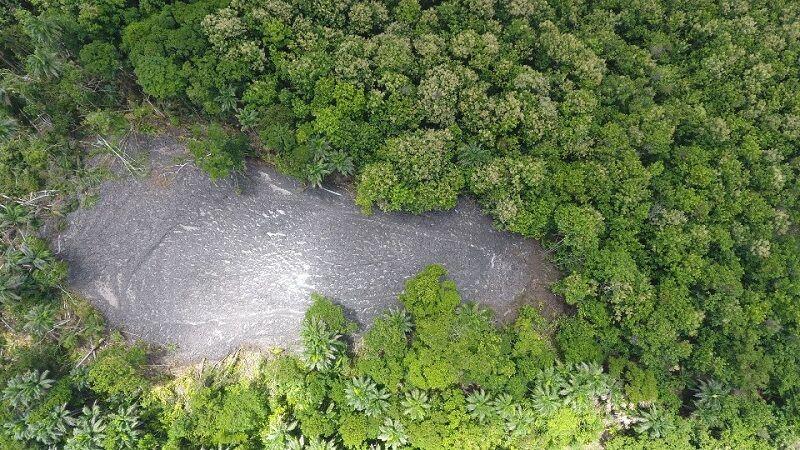
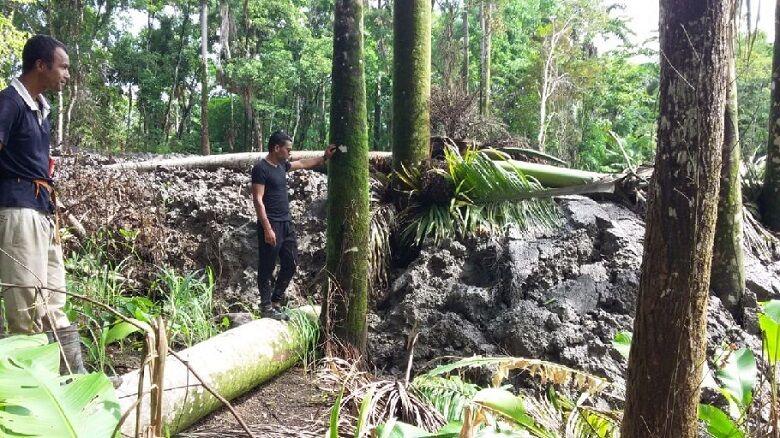




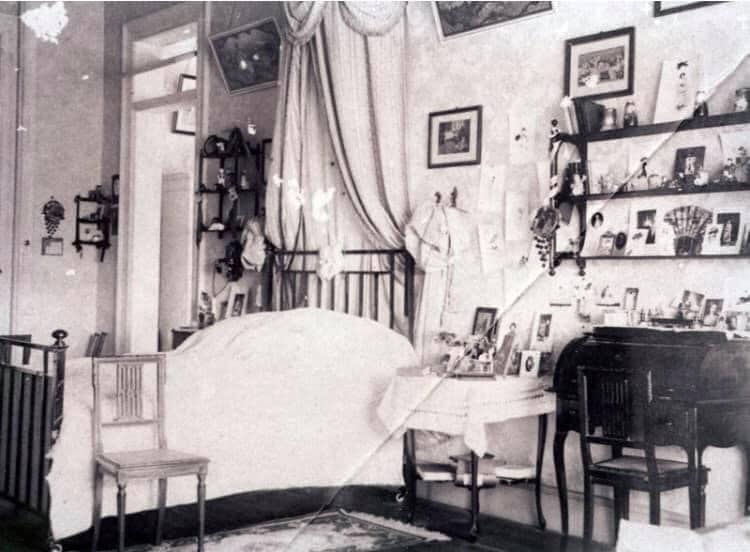
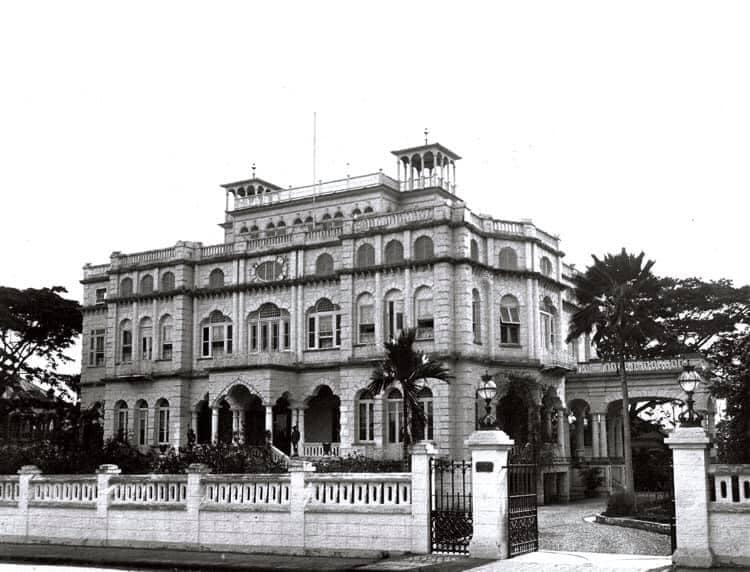
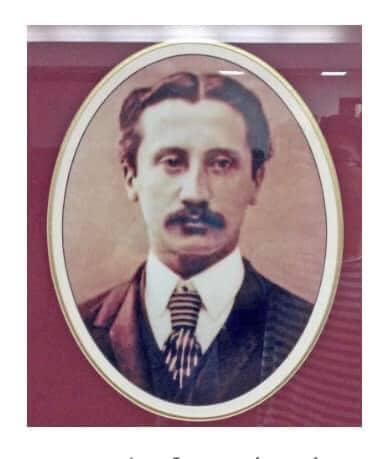


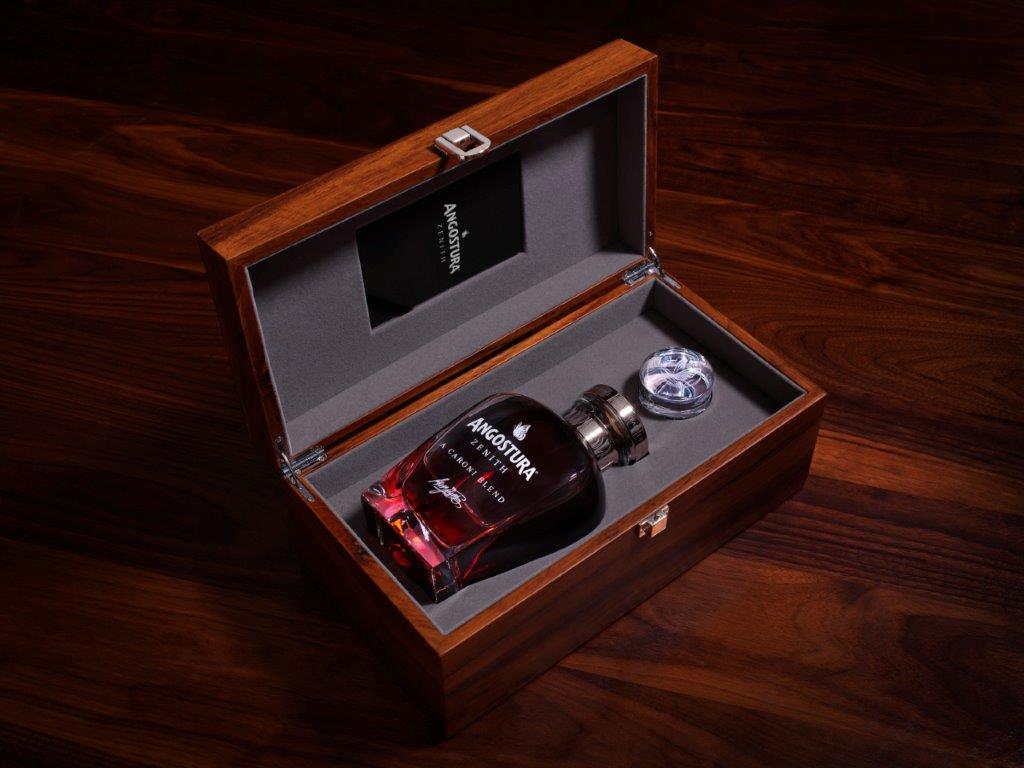

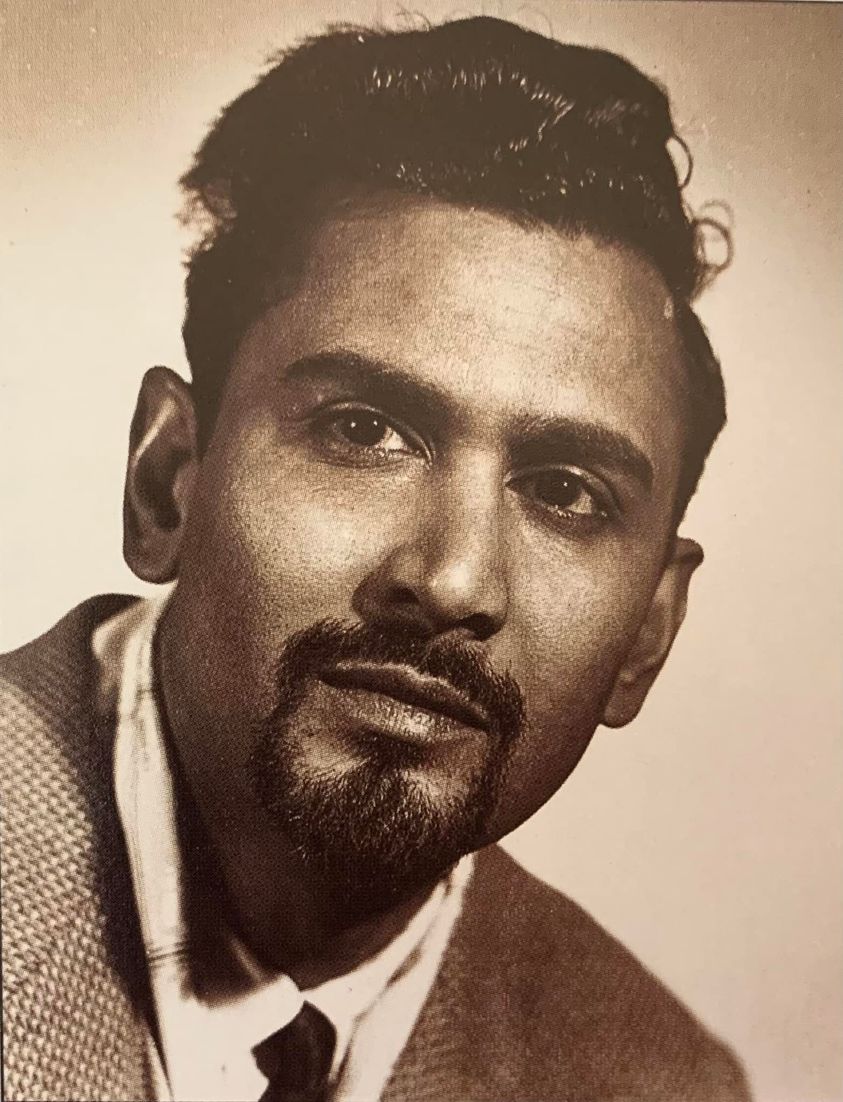

 RSS Feed
RSS Feed